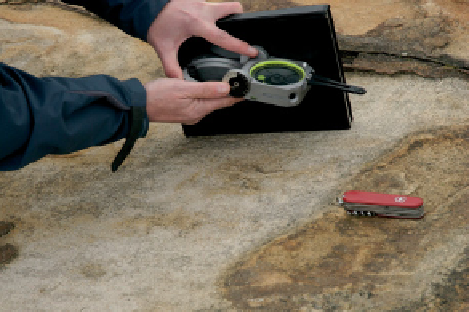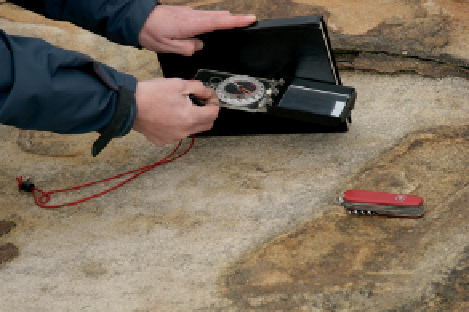Geoscience Reference
In-Depth Information
1. General orientation
Assess the linear feature and select a clear
part to measure. In this case the feature is
current lineation on a sedimentary bedding
surface (parallel to the penknife). This
feature can be used to obtain a
palaeocurrent flow direction.
2
2. Azimuth
Place the edge of your notebook or clipboard on the linear feature, holding the topic/clipboard
vertical and parallel to the feature so as to create a vertical plane above it. Hold the long side of the
compass-clinometer against the vertical side of the topic and measure the azimuth of the lower end
of the linear feature relative to north (i.e. the direction of plunge). For the Silva-type compass-clinometer
you will need to rotate the dial until the magnetic needle is aligned with the north arrow of the compass.
Ensure the compass window is horizontal before recording this measurement (for the Brunton-type
compass you can do this by checking the round spirit level). In this case the azimuth is 148°.
A
S
A
B
Figure 2.9











